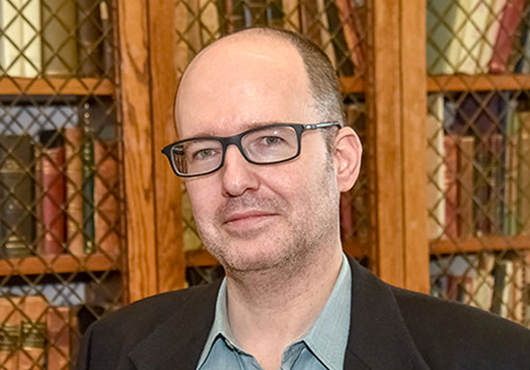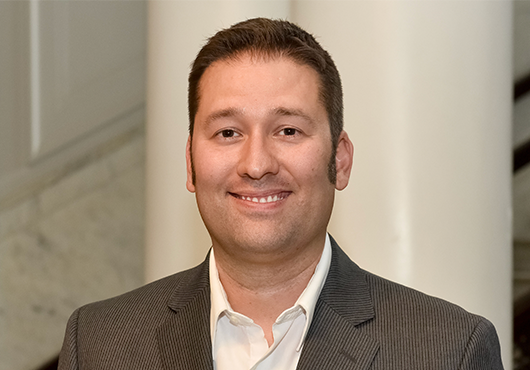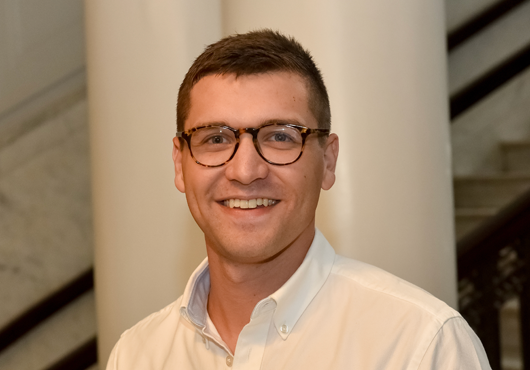
I work as a nurse in the surgical intensive care unit of Massachusetts General Hospital. In my line of work, I actively engage with life’s most painful moments. I witness suffering daily and alleviate what pain I can. When I decided to return to school to get a master of bioethics at Harvard Medical School, the last thing I expected was that I’d miss wearing my scrubs.
Drab in color, unflattering in the extreme, my scrubs are comfortable and unassuming. They are pleasantly low maintenance and allow me to focus on the multitude of tasks involved in caring for my critically ill patients. In my scrubs, I can lean in close to the hardships that my patients endure. I would not want to wear anything else to do my job.
In my blue uniform, I identify with generations of practitioners making critical advances in medicine, furthering our ability to improve health and extend life itself. I feel like a member of an elite team: party to the mission of “Man’s Greatest Hospital.”
On my way to work, I walk through the corridor of the Department of Anesthesia where a portrait of Dr. Henry Knowles Beecher hangs. Working in a hospital, especially one with a history as grand as Mass General’s, you have seen a doctor’s portrait or two, and you know what they are supposed to look like. Beecher’s portrait flouts the norm in a way that I love. It is literally surreal.

Artist: Jean Pierre Aloux, 1962.
Massachusetts General Hospital
Department of Anesthesia
The portrait sparked my imagination and made me curious, until one day I finally snapped a photo of the man and Googled him. He was a physician at Mass General in the 1960s who is credited as one of the founders of the field of bioethics. His investigations helped develop national research standards, which gave rise to modern IRBs.
Beecher’s conscience warned him that there was something wrong going on in the research world. By embracing the uncomfortable feeling, he inspired change. Beecher’s recognition of morality required paying careful attention to and analysis of these uncomfortable feelings of conscience. By methodically analyzing ethical discrepancies in practice, Beecher did empirical research that focused attention on the ethics of clinical research. Publication of his findings led to change. His empirical work demanded change. Beecher, to me, represents the promise that, even a solitary clinician paying attention to ethics, can affect change on a universal scale.
To be a bioethicist is to find what is uncomfortable and have the courage to seek to understand it. Beecher’s work inspired me to confront the feeling of raw conscience in my gut: to learn about what causes it and to examine its nature. Beecher himself may be the reason that I returned to school and subjected myself to a professional life beyond my comfortable, carefree scrubs. For that, I am forever thankful.
As the student editor of this second issue of the HMS Bioethics Journal, I hope you will see this willingness to tackle uncomfortable ethical issues in each feature.
Joseph Fins considers the potential for medicalized politics and questions whether the neuroethical concept of a “duty to warn” might support what would appear to be a breach of the Goldwater Rule.
Courtney Sas and Jon Marron argue that patients with renal failure must be informed of all their alternatives—including that of stopping dialysis at any time.
Spencer Hey calls for expanded efforts by IRBs to identify, track, and reduce low-value or wasteful research. Sarah Murphy wonders whether creating a national searchable database for IRB decisions might solve perceptions of inconsistent or idiosyncratic decision rendering.
Authors Brad Segal, Sebastian Porsdam-Mann, and Yusuke Mori consider the sticky ethical issues involved in harvesting human organs from chimeric pig donors and propose the adoption of the dead donor rule to protect the welfare and existential interests of these would-be partially-human beings.
Allyn Benintendi reviews the documentary 13th, bringing in the language of health and bioethics to better understand the history of the U.S. prison system and its disproportionate incarceration of Black people after the abolition of slavery.
Diana Alame reviews David Jones’ book, Broken Hearts: The Tangled History of Cardiac Care, and argues that recognizing the potential for bias in how doctors make treatment decisions is in the interest of both patients and practicioner. In the accompanying video interview, Center Director Robert Truog and Jones discuss the book’s insights and possible implications for developing therapeutics.
Finally, Patrick T. Smith talks to Mass ACLU's Rahsaan D. Hall about social justice and religious ethics in our Spotlight video interview.
As a nurse, it’s my job to make you comfortable. As a bioethicist, I hope this issue of the HMS Bioethics Journal inspires you to explore what makes you most uncomfortable.
Elizabeth Siliski, CCRN, MBE '18, can be reached at esiliski (at) mgh.harvard.edu.


